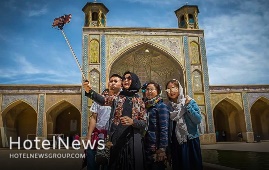
Though international tourism has revealed signs of a rebound as some destinations eased travel restrictions over the past couple of months, the lack of international coordination and slow vaccination rates in several countries and regions suggest it may need a longer time to bounce back. On the one hand, according to the latest edition of the UNWTO World Tourism Barometer, an estimated 54 million tourists crossed international borders in July 2021, down 67% from the same month in 2019, but the strongest results since April 2020. This compares to an estimated 34 million international arrivals recorded in July 2020, though well below the 164 million figure recorded in 2019. On the other hand, another research conducted by Oxford Economics on behalf of the World Travel and Tourism Council (WTTC) reveals that countries’ GDP is expected to increase only by less than one-third, as tourism is recovering even slower than expected. The research was based on the current vaccination rates globally, consumer confidence, and less stringent entry and travel restrictions in the world. However, prospects for September-December 2021 remain mixed, according to the latest UNWTO Panel of Experts survey, with 53% of respondents believing the period will be worse than expected. Only 31% of experts expect the point to better results towards the end of the year. The survey also shows that most tourism professionals continue to expect a rebound driven by unleashed pent-up demand for international travel in 2022, mostly during the second and third quarters. Almost half of all experts (45%) continue to see international tourism returning to 2019 levels in 2024 or later, while 43% point to a recovery in 2023. By regions, the largest share of experts pointing to a return to 2019 levels in 2024 or later are in Asia and the Pacific (58%). In Europe, half of the respondents indicate this could happen in 2023. West Asia is the most optimistic, with a full recovery expected by 2022. The sector needs leaders who can recognize ideas that will make a difference, who will innovate and back entrepreneurs and start-ups. As mentioned by the UNWTO Barometer, most destinations reporting data for June and July 2021 saw a moderate rebound in international arrivals compared to 2020. Nevertheless, 2021 continues to be a challenging year for global tourism, with international arrivals down 80% in January-July compared to 2019. Asia and the Pacific continued to suffer the weakest results in the period January to July, with a 95% drop in international arrivals compared to 2019. West Asia (-82%) recorded the second-largest decline, followed by Europe and Africa (both -77%). The Americas (-68%) saw a comparatively smaller decrease, with the Caribbean showing the best performance among world subregions. Meanwhile, some small islands in the Caribbean, Africa, and Asia and the Pacific, together with a few small European destinations recorded the best performance in June and July, with arrivals close to, or sometimes exceeding pre-pandemic levels.” Iran preparing for tourism rebound Iran considers reopening borders to foreign vacationers as its new tourism minister has said the government will soon scrap visa restrictions. Cultural Heritage, Tourism and Handicrafts Minister Ezzatollah Zarghami made the announcement last month following his conversations with President Seyyed Ebrahim Raisi, however, the minister did not specify the date upon which those regulations would be scrapped. According to some sources, fully vaccinated travelers would be embraced first under the updated regulations. The average of international travels to and from the Islamic Republic fell by 80 percent during the past Iranian calendar year 1399 (ended on March 20, 2021) from a year earlier. “During this period, 4,343,163 passengers entered the country, which included 3,030,464 Iranian passengers and 512,699 international travelers,” according to Arezou Ghaniun, an official with the Islamic Republic of Iran's Customs Administration. “From the beginning of 1399 to the end of it, we saw a significant reduction in passenger traffic to the country or vice versa in land, sea, rail and air borders, which were caused by various coronavirus restrictions.” Months of steep recession has taken its toll. Many travel insiders, hoteliers, and tour operators have faced big dilemmas such as bankruptcy, unemployment, debts, and the prospects of not being competitive on the international level. Panels of travel experts have mapped out new marketing strategies hoping Iran’s tourism would get back on its feet once again. For instance, the Head of the Iranian Tour Operators Association has said the international tourist flow to Iran will return to normal until 2022. Iran is potentially a booming destination for travelers seeking cultural attractions, breathtaking sceneries, and numerous UNESCO-registered sites. Under the 2025 Tourism Vision Plan, Iran aims to increase the number of tourist arrivals from 4.8 million in 2014 to 20 million in 2025. Domestic tourism as a propeller in COVID era The annual UNWTO Executive Training Programme, which was held in the Maldives from October 5 to 8, sharpened the focus on harnessing the power of domestic tourism to drive recovery and growth in destinations across Asia and the Pacific. Now in its 15th year, the event brought together representatives of 25 countries, with six (Iran, Sri Lanka, Afghanistan, Bangladesh, Mongolia, and Nepal) joining hosts in the Maldives to attend the training sessions in person. Reflecting the restart of domestic tourism ahead of international tourism, both across Asia and the Pacific and globally, the event focused on enabling destinations of all sizes to capitalize on this trend. Opening the event, UNWTO Secretary-General Zurab Pololikashvili stressed that, as tourism restarts in many parts of the world, “the sector needs leaders who can recognize ideas that will make a difference, who will innovate and back entrepreneurs and start-ups”. Confidence in travel rising sluggishly Such an enhancement was underpinned by the reopening of many destinations to international travel, mostly in Europe and the Americas. The relaxation of travel restrictions for vaccinated travelers, coupled with the progress made in the roll-out of COVID-19 vaccines, contributed to lifting consumer confidence and gradually restoring safe mobility in Europe and other parts of the world. In contrast, most destinations in Asia remain closed to non-essential travel. According to UNWTO Secretary-General Zurab Pololikashvili, there is a strong demand for international tourism, and many destinations have started welcoming visitors back safely and responsibly. However, the true restart of tourism and the benefits it brings remains on hold as inconsistent rules and regulations and uneven vaccination rates continue to affect confidence in travel,” Pololikashvili says.
Create: Oct 10, 2021 Edit: Oct 10, 2021 Regional News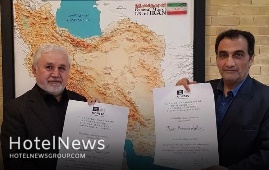
Certificates of registration of four Iranian UNESCO World Heritage sites have been handed over to the tourism ministry, the deputy tourism minister has announced. The Ministry of Cultural Heritage, Tourism, and Handicrafts has received registration certificates of four cultural heritage, which have been listed by UNESCO over the last two years, IRNA quoted Ali Darabi as saying on Friday. The ministry has received certificates for Trans-Iranian Railway, Cultural Landscape of Uramanat as tangible cultural heritages as well as the art of miniature, jointly with Azerbaijan, Turkey, and Uzbekistan and pilgrimage to St. Thaddeus jointly with Armenia, as UNESCO Intangible Cultural Heritage, the official added. Having a global register of tangible and intangible heritage is vital because these works, regardless of race, nationality, and religion, belong to all human society, and all governments and nations have a duty to preserve and protect them, even during times of war, he noted. Increased recognition of a country’s cultural heritage on the World Heritage list certainly contributes to the development of the tourism industry and businesses related to it, and most importantly, introduces the culture and civilization of a nation to the world, he explained. With 26 World Heritage Sites, Iran ranks 10th in the world in terms of the number of historical monuments and sites registered on the UNESCO World Heritage list. Before the Islamic Revolution, Persepolis, Naghsh-e Jahan Square, and Choghaznabil were the only three UNESCO-listed monuments, but today the number has been increased this number to 26 historical sites. Trans-Iranian Railway The railway can be regarded as a turning point for comprehensive developments in Iran. These developments include a wide spectrum of various economical, commercial, social, cultural, and even political aspects in a sensitive and important period of contemporary world history. Consequently, the 1394 kilometers long Trans-Iranian Railway was built with a width of 1435mm and 90 working stations along its route. It starts at a point north of Torkaman port located southeast of the Caspian Sea. After going through Sari and Qaem-Shahr cities, the railway enters the mountainous region of Alborz through the high Firooz-kooh Pass which is linked with Tehran and Varamin Plain by numerous bridges and tunnels. Further on after crossing the flatlands of Qom and Arak, the Trans-Iranian Railway penetrates Zagros highlands in Lorestan Province and passing through a large number of tunnels and bridges reaches Andimeshk situated in the low Kuzestan Plain. Finally extending to the vicinity of Dezful, Ahwaz, and its grand bridge on Karoon, the Trans-Iranian Railway is divided into two branches ending separately at Khoram-Shahr and Imam-Khomeini ports on the Persian Gulf. Cultural Landscape of Uramanat Stretched on the slopes of Sarvabad county, and shared between the provinces of Kordestan and Kermanshah, the rural area of Uramanat embraces dense and step-like rows of houses in a way that the roof of each house forms the yard of the upper one, a feature that adds to its charm and attractiveness. As the cultural landscape covers 300 villages and in terms of architecture and landscape, it is one of the most beautiful and presentable heritages in the world. Uraman is considered a cradle of Kurdish art and culture from the days of yore. Pirshalyar, which is named after a legendary local figure, is amongst time-honored celebrations and rituals that are practiced annually across the region. The art of miniature The miniature is a type of two-dimensional artwork that involves the design and creation of small paintings on books, paper-mâché, rugs, textiles, walls, ceramics, and other items using raw materials such as gold, silver, and various organic substances. Historically, the miniature was exemplified by book painting in which the text was supported visually, but the element has evolved and can also be observed in architecture and as an adornment in public spaces. The miniature displays a specific type of perspective in which the size of the figures changes according to their importance - a key difference between realistic and naturalistic styles. Though it has existed for centuries, it continues to develop and thus strengthens the bonds between past and present. Traditional painting principles and techniques are preserved, but artists also bring individual creativity into the process. Pilgrimage to the St. Thaddeus The annual three-day pilgrimage to St. Thaddeus Apostle Monastery in northwestern Iran is held each July. The pilgrimage venerates two prominent saints: St. Thaddeus, one of the first apostles preaching Christianity, and St. Santukhd, the first female Christian martyr. The bearers of the element are the Armenian population in Iran, Iranian-Armenians residing in Armenia, and followers of the Armenian Apostolic Church. Pilgrims gather in Tabriz before departing for the monastery. They cover 700 kilometers from Yerevan to the monastery annually. The commemoration ceremony includes special liturgies, processions, prayers, and fasting. It culminates in a Holy Mass with Holy Communion. Special times are set aside for traditional Armenian folk performances and Armenian dishes are served. The pilgrimage is the primary social and cultural event of the year.
Create: Oct 10, 2021 Edit: Oct 10, 2021 Regional News
IHG’s Holiday Inn brand, one of the most iconic and trusted brands in the world, has undergone a global transformation over the last 18-months and its next-generation design includes innovative open lobbies and incredible F&B. Opening in Melbourne’s West this week, Holiday Inn Werribee boasts these new brand hallmarks and is a great example of how vibrant and stylish the new-look Holiday Inn hotels have become. An exciting addition to one of Melbourne’s fastest growing suburbs, the brand new, purpose-built hotel in central Werribee, Victoria features 150 contemporary and modern rooms, an open lobby, onsite bar and restaurant and versatile meeting spaces. Encompassing the top four floors of 22 Synnot Street, Werribee, the hotel offers striking, unparalleled views over Werribee and towards Melbourne’s city skyline. A first for the Holiday Inn brand within Australasia, Holiday Inn Werribee features an Open Lobby concept that transforms the traditional hotel lobby and is based on understanding how people use space at home to give guests the most flexibility, to eat, relax, work, or socialise in one space. Designed with the needs of the modern traveller in mind, the public spaces feature a contemporary lounge area and an e-Bar for those who need to catch up on the day’s news or work, whilst still being part of the social vibe of that space. Guests along with members of the public can enjoy all-day-dining at Rosana Bistro & Bar, which serves up modern Australian cuisine with a menu full of fresh local produce, sourced from within the Werribee region. Offering comfortable and modern short stay accommodation, guests will feel right at home in Holiday Inn Werribee’s spacious, modern light-filled rooms, each featuring comfortable bedding, large TVs and free unlimited high speed WIFI. Families are well catered for with family rooms and interconnecting suites and the Holiday Inn signature promise that Kids Stay & Eat Free.* Conveniently located in the heart of Werribee, the hotel offers easy access to the world class tourism attractions which can be found within the Werribee Park Precinct, such as the Werribee Open Range Zoo, Werribee Mansion, Victorian State Rose Garden and the National Equestrian Centre. It is also located within easy walking distance of the burgeoning foodie hub of Watton Street and is a short drive away from Werribee Mercy Hospital. Preston Miskelly, General Manager of Holiday Inn Werribee said his team was excited to open their doors and welcome their first guests to Werribee. “Reliably familiar, yet refreshingly different, Holiday inn Werribee is a comfortable and inviting home away from home. Our open lobby with its floor to ceiling windows and amazing views, not only gives our guests a warm and welcoming place to relax, work or socialise, it is also home to our modern restaurant and bar. It is the ideal location to enjoy dinner or drinks with family and friends as you watch the sun go down.” The opening is the first in an exciting period of growth for the Holiday Inn brand in Australasia with other new build hotels in the pipeline – including the opening of Holiday Inn Remarkables Park, Queenstown in October 2021 and Holiday Inn Melbourne Bourke Street Mall in 2022. These hotels will join the 41 open or pipeline Holiday Inn brand family hotels in Australasia & Pacific. Globally, it’s the world’s largest brand family with more than 4,100 open and over 1,000 in the pipeline, continuing to create many more destinations for the moments that matter.
Create: Aug 1, 2021 Edit: Aug 1, 2021 International News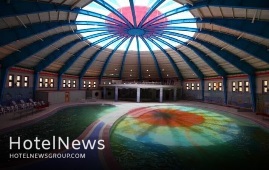
A modern hydrotherapy center was inaugurated in the tourist city of Meshkinshahr, northwestern Ardebil province, on Friday. A budget of 160 billion rials ($3.8 million at the official exchange rate of 42,000 rials per dollar) was allocated to the project, the provincial tourism chief announced during the inauguration ceremony. Situated in the Qutursui tourist area, the center has the most acidic mineral spa in the world, CHTN quoted Nader Fallahi as saying. Water for the hydrotherapy center is sourced from hot water springs in the area, which is beneficial for skin ailments, the official added. This new complex, which features separate sections for women and men, will allow Meshkinshahr to attract more tourists from abroad and grow its tourism industry twice as fast as before, he noted. Meshkinshahr embraces several historical sites including Qale Khohneh (“Old Castle”), the ancient site of Shahr-e Yeri, and Qahqaheh castle. Situated near the high Mount Sabalan, Meshkinshahr enjoys a moderate mountainous climate and the Sabalan summit can be seen in the south of the city with eye-catching sceneries. The antiquity of the city dates back to the early centuries of Islam but in the Safavid era, it was thriving even more. The city is well known for its rugs and its mineral springs. Meshkinshahr suspension bridge with 345 meters long, 3 meters wide, and 80 meters high, which was inaugurated in 2015 and is said to be the largest of its kind in West Asia, is also one of the top tourist destinations of the city.
Create: Aug 1, 2021 Edit: Aug 1, 2021 Regional News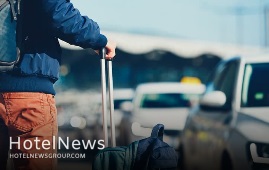
Coming out of the pandemic, guest demands have irreversibly changed. They don’t want cookie-cutter rooms; they want experiences. This harks back to the push over the previous decade to make our properties more ‘locally authentic’. Now, with lean teams and skeleton crews, the only way to effectively meet this demand is through technology.For the post-pandemic travel landscape, local authenticity means more than just a cursory immersion in the arts, culture and heritage of one’s locale. It also equals peace of mind because, in light of the residual anxiety over COVID-19, guests need to feel as though their specific requests are being handled.As a simple leisure scenario, picture yourself going on an international vacation with your loved one for the first time since the virus struck. You have all the new airport procedures to contend with. You’ve been wearing a mask for hours on end, which is inherently uncomfortable. And now you’re in a foreign city and country and don’t know what attractions and stores have reopened or what the local safety guidelines are, on top of a myriad of other questions that would require some digging online. Instead, wouldn’t it be great to know that your host hotel has your back the whole way?In the past, luxury brands have provided this kind of omniscience by deploying an army of staffers, but this model won’t jive in the post-pandemic, hyper-labor-efficient market conditions. Moreover, hotels must be proactive in the pre-arrival stage to ensure incoming guests have everything that they need and to make arrangements on their behalf. This sets the pace for a great onsite experience in lieu of the outdated ‘reactive’ process of waiting for guests to reach out to you with their inquiries. Done right, hotels can utilize integrated platforms and build a versatile CRM to connect the entire guest journey that also offers a clear counterargument to the largely self-serve nature of home-sharing accommodation providers such as Airbnb. Here are five ideas to help you incorporate this newfangled, full-service model. 1. Home-sharing platforms offer a direct, two-way messaging service with the accommodation host, and hotels must do the same. Brands should be using a chatbot to immediately respond to the simpler questions –which represent the majority of inquiries – then bouncing the more complex ones onto your front desk or concierge. Ditto for the voice channel where booking engines are available 24/7 and so too must your intake team be ready at all hours in order to win the business. 2. Speaking of booking engines, these should no longer be only for rooms, particularly if we want to continue to push guests towards our websites from the OTAs. Customers should be able to plan their entire trip itinerary from these portals, starting with dining reservations and spa appointments through to arrival amenities and perhaps a few ‘surprise and delight’ freebies such as their preferred, complimentary welcome refreshment or departure gift. With so much confusion about what’s open and what’s not, being an ambassador means guiding guests through this uncertainty as early in the customer journey as possible. 3. Physically getting to an accommodation booked through a home-sharing platform is mostly a laissez-faire ordeal. So, why can’t hotels offer bespoke, point-to-point guidance on transportation to and from the rail station or airport, as well as recommendations on how to get to the city or region? As a guest’s perception of your arrival experience can depend on the agony of how one arrives at the hotel, why leave this to chance? Besides better integrations to flight trackers so that you know exactly when your guests are expected to arrive, such innovations as autonomous vehicles are just around the corner, which could drastically bring down the costs of shuttle services. Grandiose for now, perhaps a present-day possibility would be a flight tracker integration so that you know when guests are expected to arrive and can be ready with a warm welcome. 4. The future of travel will be more purpose-driven. Namely, with so many anxiety-riddled barriers following COVID-19, guests will want to maximize their time while aboard. Planning a guest’s itinerary or making local recommendations has traditionally fallen under the purview of the concierge, but the time is right for building a ‘pick your own adventure’ program of bundled, turnkey half-day and full-day activities. This will require deeper integrations with third-party operators as well as a rethink of what onsite or offsite services are most meaningful for guests based upon their given travel purpose. For instance, a late-afternoon, post-meeting relaxation package with a whiskey tasting, revitalizing nosh and back massage will have vastly different appeal from a daylong sightseeing tour that includes timed entrances to exclusive local events. 5. The post-stay relationship is where home-sharing hosts are weakest. The platform does the brunt of this, focusing more on exploring new destinations rather than return visits. For hotels, traditionally the last interaction between guest and staff was often a checkout at the front desk where the final bill was confirmed, representing an emotionless, transactional touchpoint. Now with contactless checkout, hotels can transform this into a meaningful ‘thank you’ gesture followed by a series of one-to-one messages based upon what a guest utilized while onsite. With a fully integrated CRM, this messaging can be sentient insofar as knowing when to push for additional sales and when to simply keep past guests up to date on the latest happenings.
Create: Jul 28, 2021 Edit: Jul 28, 2021 Hotel Management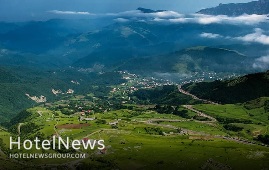
Countries are defined geographically and politically by their borders. Borders are fundamentally linked to tourism, as travel almost always entails crossing a political or another boundary, and borderlands are often the first or last areas of a country visited by travelers. Iran has a total of 5,894 kilometers of land borders with its neighbors Afghanistan, Armenia, Azerbaijan, Iraq, Pakistan, Turkey, and Turkmenistan. It also borders the Caspian Sea, Persian Gulf, and the Gulf of Oman. Several border cities dot Iran, owing to the vast size of the country’s land borders. The border cities of Iran, however, have limited tourist numbers due to their long distances from the country’s center, as well as the fact that they have not been properly promoted for foreign visitors. Here are some of the most beautiful border cities that have always gone unnoticed. Astara Astara, an Iranian border city and port, offers a wide range of tourist attractions. It is a major tourist and economic center on the west coast of the Caspian Sea, in the Gilan province. It is the last point of the border between Iran and Azerbaijan. Hakim Nezami School and Shindan Castle are two of the city’s historical sites. Astara Lagoon, Astarachay river, Qarasu river, Chelvand river, Darband river, Lavandvil river, and Espinas mountain are some of the city’s natural attractions. Among Iran’s border regions, Astara is the only area that has not experienced any tensions in the last 80 years, making it one of the safest. There is a great deal of tourism in this region because of the natural beauty and the weather. Jolfa Located in northwestern East Azarbaijan province, Jolfa borders the countries of Armenia and the Republic of Azerbaijan to the north. Jolfa has a semi-desert climate with warm summers and partly cold, moderate winters. The special importance of Jolfa is due to its historical monuments, strategic location, and appropriate geographical features, as well as its proximity to the commercial and industrial free zone of Aras (one of Iran’s most important commercial centers). Seyyed Abolqasem Nabati tomb, Duzal tower, Saint Stepanos Monastery, Nane Maryam church, ruined mill, Ushtibin village, St. Mary church, Baba Yaqub shrine, Ali Beyg fort, Jolfa historical bath and etc., are the most significant monuments and tourist attractions in this area. The region’s economy is fueled by the abundance of water resources, grasslands, and forest reserves, as well as its high potential for growth and industrialization. Minerals, agriculture, livestock, services, and scientific and training development also play an important role. There are a lot of cotton fields in this city, and weaving is the major activity of the locals. Jolfa people are Azeri and they speak in Turki Azerbaijani in their own local dialect. Maku Maku is located northwestern province of West Azarbaijan and enjoys a unique geographical and natural location. In a valley passes through which the Zangmar River divides Maku into two parts, the city is located 1294 meters above sea level. The city is surrounded by the Qarasu River and Turkey from the north, the Aras River (the Nakhchivan Autonomous Republic and Armenia) from the east, Khoy from the south, and Turkey from the west. Due to the surrounding stony mountains, this city has a moderate climate in winter and a hotter climate in summer. Mountainous landscapes, flourishing pastures, hot water springs, waterfalls, protected areas, and hunting grounds are some of the tourist attractions of this area. Maku is located on the main Tabriz-Bazargan road and has an excellent strategic location. Among the city’s most significant features is its role as the country’s only land border business and a link to Europe. As part of Maku’s economy, there is an industrial complex on the Maku-Bazargan road. Maku people rely on cross-border trade, agriculture, and animal husbandry for their livelihood. Zahedan The city of Zahedan is located in eastern Iran close to the Pakistani border. There are high lands around Zahedan, so it looks like a pit. The city is home to the mountains of Oshtoran Koh, Anjir Dan, Jico, Pir Khan, and Mulk-e Siah. Climates in this area are characterized by intense heat, aridity, and warmth. Zahedan consists of 4 parts: "Markazi", "Mir Jave", "Nosrat Abad", and "Korin", three cities, and eight rural districts. It is an academic, cultural, historical, and religious city that has a service structure. Zahedan enjoys a privileged geographic and border location which makes it an ideal place for trade with India thanks to its convenient location on the Afghanistan-Pakistan route. Pakistan’s railway enters Iran from the Mirjaveh border and Iran’s railway ends in this city. By being located among the Khorasan, Kerman, and Chabahar land routes, Zahedan is one of the Iran transit routes. Zahedan’s economy depends on agriculture in addition to trade. There are subterranean, spring, and river wells that supply the water this city needs. This area is full of color in its literature, clothing, and music. Zahedan’s cultural diversity results from migration. A good example of Baluch handicrafts is the klim bafi, needlework, seke dozi, and pottery. Zahedan architecture is influenced by Iran's ancient architecture due to its tropical weather. Baneh One of the border cities between Iran and Iraq, Baneh is located in the western province of Kordestan. The city is located 20 kilometers from the Iranian-Iraqi border, 60 kilometers southwest of Saqez and 70 kilometers southeast of Sardasht. The city is known for its large and natural oak forests. In 1984, Iraqi planes bombed Baneh and some nearby settlements during the Iran-Iraq war (1980-1988). Dul Arzan village, Shevi cave, Baneh Dam, Sorin complex are among the city’s tourist attractions, however, most of its reputation comes from its border malls and its status as a trade center. Local people speak Kurdish with Slemani accent.
Create: Jul 17, 2021 Edit: Jul 17, 2021 Regional News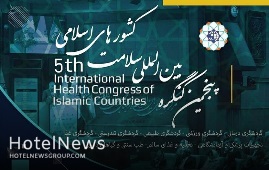
The 5th edition of the International Health Congress of Islamic Countries started in Tehran on Tuesday, aiming to find new opportunities for cooperation and development of health tourism among Muslim nations. Being held at IRIB International Conference Center, the congress is organized by the Health Tourism Development Center of Islamic Countries (HTDC) and supported by ministries, federations, institutions, and organizations in health tourism as well as private and governmental health service providers, the official website of the event announced. The three-day event has brought together seniors and experts from governmental and private sectors in the health tourism industry. The congress is being held in five specialized panel discussions of medical tourism, sports tourism, natural, wellness, and food tourism, medical and laboratory equipment, and nutrition and healthy food. The event started its official operations in 2015 with the aim of playing an effective role in developing economic relations and facilitating the networks between stakeholders in the health and health tourism industry. The developing health tourism industry is one of the most important fields of Iran’s travel sector, which is trying to prove its capabilities and capacities in attracting medical and health tourists to the country. Many domestic experts believe that medical tourism in Iran is a win-win opportunity both for the country and foreign patients, as they are offered affordable yet quality treatment services and the country gains considerable foreign currency. Iran’s two most popular medical tourist cities are Tehran and Mashhad, but the coronavirus outbreak has significantly reduced the number of travelers. Iran is one of the major destinations for health tourism in the region, and patients with 55 different nationalities, mostly from neighboring countries including Iraq, Kuwait, Bahrain, Qatar, Saudi Arabia, Oman, Pakistan, Afghanistan, Tajikistan, and Turkmenistan are seeking to use Iran’s services and facilities in this field. Iranian hospitals admitted nearly 70,000 foreign patients over the Iranian calendar year 1397 (March 2018 – March 2019) and it made an economic contribution of around $1.2 billion to the country, according to the medical tourism department at the Ministry of Health. In April 2018, the rotating presidency of the International Health Tourism Conference of Economic Cooperation Organization (ECO) was handed to the Islamic Republic for a three-year term. Mohammad Jahangiri who presides over a national center for developing health tourism said in May 2018 that Iran can annually earn $7 billion in medical and health tourism, though the sector now brings in only one-seventh or even lesser of the sum. The Islamic Republic has set its goals to exceed its yearly medical travelers to around 2 million in the Iranian calendar year 1404.
Create: Jul 17, 2021 Edit: Jul 17, 2021 Regional News
Alpental Capital (“Alpental”), a Denver-based hotel investment group, announced the acquisition of the Courtyard Atlanta Airport West and has selected Providence Hospitality Partners to manage the hotel. The 128-room hotel is located in East Pointe, Georgia, three miles from Hartsfield-Jackson International Airport and just a 10-minute drive from downtown Atlanta. The hotel recently completed an extensive $1.6m guestrooms renovation in 2018-2019, and Alpental has continued capital improvements planned for the property to further enhance the guest experience. In addition to the recently renovated guestrooms, the four-story hotel features an airport shuttle, outdoor pool, Bistro & Bar, 24-hour fitness center, 24-hour business center, and complimentary WiFi and parking. The property also provides over 3,000 square feet of meeting space that can accommodate up to 130 people, along with an executive boardroom. “We are proud to add the Courtyard to our growing hotel portfolio. The acquisition is well aligned with our strategy of acquiring high-quality hotels in submarkets with dynamic demand drivers,” said Greg Wilson of Alpental Capital. “The hotel’s new management team has done an excellent job reopening all amenities at the hotel that were temporarily closed during COVID and ensuring top quality service to our guests.” Located just off I-285 and Camp Creek Parkway, the Courtyard Atlanta Airport West is across the street from more than 1.2 million square feet of premium retail space at the Camp Creek Marketplace. The hotel is also located at the entrance of Camp Creek Business Center, an industrial development with 4 million square feet of developed space. Nearby is Atlanta’s downtown area, the Georgia International Convention Center, Turner Field, and the Georgia Aquarium, among other attractions. Guests have convenient access to and from the nearby Hartsfield-Jackson International Airport via the hotel’s complimentary airport shuttle. The Hartsfield-Jackson International Airport has historically been the busiest airport in the world and even through the pandemic, the airport has remained the busiest in the US.
Create: Jul 7, 2021 Edit: Jul 7, 2021 International News
Accor, a world-leading augmented hospitality group with more than 600 hotels and resorts across India, Middle East, Africa and Turkey, is opening its first Raffles Resort in the Middle East, on the iconic Palm Jumeirah. Set to open in the last quarter of 2021, Raffles the Palm Dubai will be the first ultra-luxury addition to Accor’s existing diverse portfolio in Dubai. The group is partnering with Emerald Palace group (EPG), which has been successfully developing and constructing residential projects in Ukraine, UAE and Russia since 1996. At present, EGP has 8 new developments under construction, with a further 10 at project stage. “We are pleased to partner with Accor to establish the first Raffles resort in the Middle East. Our international expertise in developing and constructing hotel and residential projects combined with Accor’s knowledge, presence and prestigious brand portfolio set the grounds to open the best hotel in town!” mentioned Dr. Nver Mkhitaryan, Owner of EGP Group. Raffles the Palm Dubai will be situated within 100,000sqm landscape on the West Crescent of Palm Jumeirah, the world’s largest man-made island and archipelago. Its privileged location boasts panoramic sea views and vistas of the Dubai’s iconic skyline while offering a tranquil and private escape, just a short drive away from the city’s vibrant attractions. Once open, the resort will offer 389 luxurious rooms – starting from 65 sqm- , suites and villas, each of them featuring a balcony and terrace showcasing unparalleled sea views. Not only will this new property offer unrivalled hospitality, it will also go beyond expectations by providing the legendary Raffles butler service and offering eight new unique lifestyle food and beverage experiences. Guests looking to relax during their stay will be able to indulge in Cing Mondes Spa, an award winning 3,000sqm Parisian brand with an iconic design, never before seen in Dubai, featuring 23 treatments rooms and two private spa suites, as well as the city’s largest indoor swimming pool. Rising above the cobalt blue waters of the Arabian Gulf, the property is flanked by a 500 meter private white sand beach offering the perfect scene for an ultra-luxurious beach experience! Guests and residents will be introduced to a brand new concept beach club offering which will showcase Mediterranean cuisine, entertainment offerings and much more coming to the shores of the Raffles the Palm Dubai. When staying at the Raffles the Palm Dubai, one can expect discreet service, refined dining and artfully curated experiences, setting a new precedent in a city synonymous with pioneering hospitality. “This is a very exciting opportunity for us” says Mark Willis, CEO of Accor India, Middle East, Africa and Turkey. “There are very few beach resort plots left in Dubai and none on the Palm Jumeirah. The size of the property and its location perfectly lend itself to provide a prestigious address for the Raffles brand” With properties all around the world, each Raffles reflects the mood of its location while featuring a personality that is both intimate and luxurious and Raffles the Palm Dubai will be no exception. Guests will find themselves immersed in a luxurious urban sanctuary with sumptuous facilities, including a collection of eight dining offerings fit for royalty. Raffles frequent and novice guests will be introduced to some key elements of the Raffles brand, including the Raffles Patisserie, Writers Lounge and Library. Set to become the new “must-see” destination in Dubai, the property will undoubtedly meet the expectation of travelers from around the world. Guests looking for a private stay will be introduced to the private villas on the beach, while those travelling with family will enjoy world class amenities, including an outdoor swimming pool, a cinema, a dedicated children’s swimming pool and kids’ and teens’ club. Adventurous travelers can partake in a wealth of water sports and recreational activities such as paddle boarding, or take introductory courses in diving. “We are confident that the new Raffles will compete with world-class luxury hotels across the globe. While being located in Dubai, one of the most sought after cities in the world, Raffles will open its door to provide an unprecedented and exclusive level of luxury. From the private villas on the beach and array of dining offerings, to the expansive outdoor areas ideals for weddings and events, Raffles the Palm Dubai is all set to become a destination in itself!” adds Mark Willis, CEO of Accor India, Middle East, Africa & Turkey. Accor currently operates 410 properties (89,116 rooms) in India, Middle East, Africa and Turkey with 222 more (50,690 rooms) in the development pipeline.
Create: Jun 28, 2021 Edit: Jun 28, 2021 International News
The 6th Meeting of the Ministers in Charge of Tourism of the Turkic Council convened on 24 June 2021 in Kokand,Uzbekistan. The meeting was hosted by the Deputy Prime Minister – Minister of Tourism and Sports of the Republic of Uzbekistan H.E. Mr. Aziz Abdukhakimov, moderated by the Secretary General of the Turkic Council H.E. Baghdad Amreyev and attended by the Chairman of the State Tourism Agency of the Republic of Azerbaijan, H.E. Fuad Nagiyev; Minister of Culture and Sports of the Republic of Kazakhstan H.E. Aktoty Raimkulova; Minister of Culture and Tourism of the Republic of Turkey H.E. Mehmet Nuri Ersoy; Deputy Chairman of the Cabinet of Ministers, Deputy Minister of Economy and Finance of Kyrgyz Republic H.E.Seyit Rysaliev and Ambassador of Hungary to Uzbekistan H.E.Peter Szanto. Secretary General Baghdad Amreyev briefed the Parties regarding the current state of tourism and developments, as well as the socio-economic implications and reflections of the Covid-19 pandemic in the regional and global level. Informing the Parties on the tourism relations among the Member States, as well as undertakings and activities of the Secretariat, Secretary General expressed that the close collaboration and coordination among the Turkic countries are of utmost importance to mitigate the negative effects of the pandemic, as well as attract more tourists to the region in the post-pandemic period. Secretary General of the Turkic Council communicated the new programs and projects namely “Turkic World Tourism Capital”, “Tabarruk Ziyorat” and “Tourism Map of the Turkic World” and underlined the importance of increasing the number of flights between the major cities of the Member and Observer States. The Secretary General also noted that vocational training programs provided in the field of tourism under the umbrella of the Turkic Council created a unique opportunity for the tourism employees in developing their skills, until now more than 1000 employees benefited from these trainings, the Secretariat will further coordinate the efforts for the continuation of the training and capacity building programs. As the outcomes of the Ministerial Meeting, the Ministers agreed to launch “Turkic World Tourism Capital” project in order to promote tourism in the region, in which one of the cities from the Member States will be designated as “Turkic World Tourism Capital” annually. At the end of the Meeting, city of Kokand announced as the first “Turkic World Tourism Capital” until the next Ministerial Meeting on Tourism of the Turkic Council. In this regard, international conferences and various events will be held in Kokand with participation of public sector, civil society, private sector, academia and other relevant actors from the Member States to promote tourism in the city, as well as promote the city in the Member States and the region. Ministers in Charge of Tourism exchanged experience, information and the precautions taken by the Member States for the safe travel of the tourists during the pandemic; discussed the current tourism relations among the Member States and ways to carry forward the cooperation in the sphere of tourism, as well as prospective plans in the post-pandemic period. Ministers agreed to work on the details of the “TabarrukZiyorat” project and expressed their readiness to involve the holy places of the respective countries to the project. Parties agreed to prepare the “Tourism Map of the Turkic World” to list the main historical, cultural and touristic destinations in the Turkic World, which will be the reference project in determining the main touristic destinations in the Member States. Following the Ministerial Meeting, Secretary General held bilateral meetings with the Ministers in Charge of Tourism of the Turkic Council Member States. During the bilateral meetings, Secretary General and Ministers discussed the cooperation opportunities, as well as the future plans and projects in the field of tourism to realize in the bilateral and multilateral level.
Create: Jun 28, 2021 Edit: Jun 28, 2021 International News
IHG Hotels & Resorts, one of the world’s leading hospitality companies, is proud to announce the signing of three hotels in Thailand with long-standing partner Asset World Corporation (AWC), the country’s leading integrated lifestyle real-estate group. The multi-property agreement includes the new-build InterContinental Bangkok Chinatown – the first luxury hospitality development in the area – and two further projects in Chinatown and Pattaya, totalling 629 rooms. Rajit Sukumaran, Managing Director, South East Asia & Korea, IHG, said: “We’re excited to work with our long-standing partner Asset World Corporation to unveil these three outstanding properties across Bangkok and Pattaya. Together, they will provide an extraordinary luxury hospitality, retail and lifestyle experience for our guests. “InterContinental Bangkok Chinatown will be our third InterContinental hotel in Bangkok, and is the perfect choice for Verngnakornkhasem, one of the oldest neighbourhoods in the city. Meanwhile, we’re in advanced discussion with AWC regarding the brand positioning of the other two properties in our agreement, in Bangkok and Pattaya. “We plan to double our portfolio in Thailand in the next three to five years and these signings represent the strong growth momentum of IHG in Thailand and South East Asia. We look forward to working closely with AWC to expand their diverse hospitality and lifestyle offerings and bring our IHG family of brands to city and resort destinations throughout this wonderful country.” Wallapa Traisorat, Chief Executive Officer and President, Asset World Corporation (Plc), AWC, added: “AWC remains confident Thailand’s tourism industry has a strong future and will continue with its investments. “The expansion of our cooperation with IHG further diversifies our hospitality portfolio and allows us to deliver even more impressive experiences while meeting a wider array of customer demands, in turn bolstering the potential of Thailand’s tourism sector to expand its customer base. It will also deliver experiences that will attract tourists from across the globe who emphasise selection and international service standards.” “We’re delighted to partner with IHG Hotels & Resorts, who share our vision of bringing world-class destination concepts to Thailand. Signing an agreement with a world-class partner coincides with our quality development plan and we share a vision towards creating a better future through sustainable growth. This collaboration also reaffirms our dedication to playing a part in enhancing Thailand’s tourism competitiveness. Our projects will feature distinct architectural designs as well as impressive experiences while also generating value for their surrounding communities, society and the environment,” Wallapa further stated. “As the first luxury hospitality development in Chinatown, InterContinental Bangkok Chinatown is sure to instantly become an iconic landmark in Bangkok, while our other hotel in Chinatown will elevate the mixed used development project, and offer a fantastic lifestyle experience to our guests.” Set to open in 2027, the 332-room InterContinental Bangkok Chinatown hotel will be located within a vibrant mixed-use development in historic Verngnakornkhasem. It will feature two hotels, residences and a retail mall, including a 24-hour food centre on Charoen Krung Road. Combining the brand’s world-renowned reputation with the wonders of local culture, the hotel will feature three restaurants and bars, as well as a swimming pool, fitness centre and a vast 1,400 square metres of events and meeting space supplemented by eight private rooms. The mixed-use development will also boast the second property under this agreement – a 63-room lifestyle boutique hotel, converted from traditional four-storey shophouses to provide a stylish and authentic stay for visitors to the “Heritage of Asia City” Visitors will be spoilt for choice as they enjoy the biggest array of underground retail outlets in Bangkok, a heritage walk and an entertainment boulevard with space for festive celebrations and cultural performances. A new historical and cultural attraction – “The Golden Pagoda” – is under commission, as well as the construction of an entrance gate to welcome people into the history and culture inspiring destination. A short drive to Suvarnabhumi International Airport, the development is located close to popular tourist attractions including the Grand Palace, the shopping district, Sathorn and Silom. It will form part of the transformation of Verngnakornkhasem and ensure its status as a “must-visit” destination. Another boutique hotel under the agreement – will open in Pattaya in early 2024. Located within the Aquatique district, Pattaya’s first iconic lifestyle destination, it will be at the heart of a major lifestyle and entertainment complex featuring hotels, retail and dining outlets, and convention spaces. With 234 rooms and suites, the hotel will also feature restaurants, a rooftop bar, a swimming pool, spa and meeting rooms in excess of 670 square metres. The triple signing is part of a long-standing partnership between IHG and AWC to manage a portfolio of properties offering more than 1,200 rooms across Thailand, including the 306-room InterContinental Chiang Mai Mae Ping Hotel that will open in 2022. IHG and AWC are also exploring opportunities for the Kimpton brand, a design-led luxury boutique hotel with award-winning restaurants and bars, and heartfelt service in leading resort destinations within Thailand. Thailand continues to be a strong growth market for IHG, with 32 hotels across eight brands in the country and another 33 properties in the pipeline.The new signings are part of the company’s aim to grow its Luxury and Lifestyle portfolio in Thailand by 50%, as well as its estate, across all of its brands, in the country.
Create: Jun 23, 2021 Edit: Jun 23, 2021 International News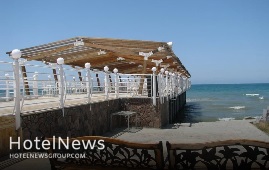
A new recreational pier will be constructed near the city of Noshahr, which is bounded by the Caspian Sea in northern Mazandaran province. Some 100 billion rials ($2.4 million at the official exchange rate of 42,000 rials per dollar) have been allocated to the project, which is to be carried out by the private sector, Noshahr’s tourism chief has announced. “Through the project, maritime tourism in the region will be reinforced and more tourists will be attracted,” IRNA quoted Mohammad Valipur as saying on Tuesday. There are also plans to construct twelve more recreational piers on the coastline of the city, but they have not yet found investors, the official added. Back in January, the head of Noshahr’s Fisheries Department Mostafa Rezvani said that constructing such piers could boost the infrastructure needed for developing fisheries investments. This capacity could also facilitate the activities of the fish farms in the coastal waters of the region, he noted. Last August, the construction of the first recreational pier in Mazandaran began in the city of Ramsar. Some 150 billion rials ($3.5 million) were allocated to the project, which aimed to enhance coastal and maritime tourism in the region. With a width of three meters and a length of 100 meters, the pier is being constructed by private investors in close collaboration with the provincial cultural heritage department. This pier is one of the 134 piers, which are decided to be built in the future across the province’s coastal strip, provincial tourism chief Mehran Hassani said. The project, which is planned to come on stream in one year, also includes restaurants, water sports space, and boat mooring. Stretched along the Caspian Sea and Alborz mountain range, Mazandaran is a popular destination for domestic holidaymakers and it is home to more than 3500 villages and rural areas.
Create: Jun 23, 2021 Edit: Jun 23, 2021 Regional News
